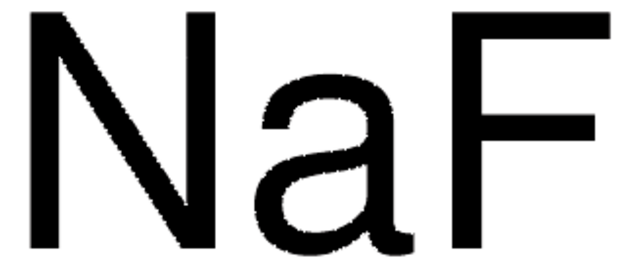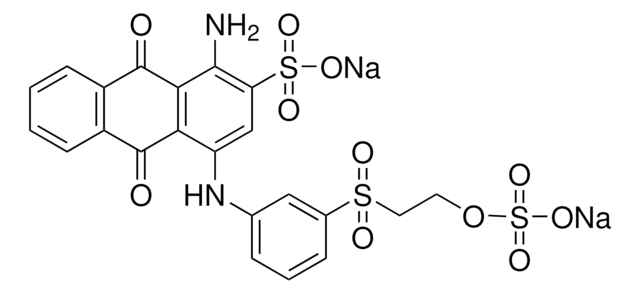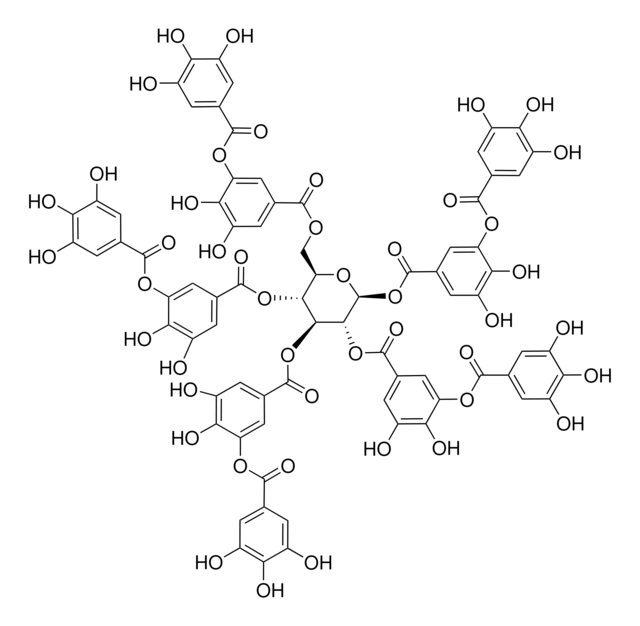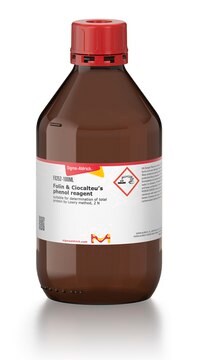Wichtige Dokumente
S1504
Natriumfluorid
ReagentPlus®, ≥99%
About This Item
Empfohlene Produkte
Dampfdruck
1.4 mmHg ( 0 °C)
Qualitätsniveau
Produktlinie
ReagentPlus®
Assay
≥99%
Form
powder
mp (Schmelzpunkt)
993 °C (lit.)
SMILES String
[F-].[Na+]
InChI
1S/FH.Na/h1H;/q;+1/p-1
InChIKey
PUZPDOWCWNUUKD-UHFFFAOYSA-M
Suchen Sie nach ähnlichen Produkten? Aufrufen Leitfaden zum Produktvergleich
Verwandte Kategorien
Anwendung
- Investigations of the reaction mechanism of sodium with hydrogen fluoride to form sodium fluoride and the adsorption of hydrogen fluoride on sodium fluoride monomer and tetramer.: The paper delves into the reaction mechanisms between sodium and hydrogen fluoride, and the adsorption properties of hydrogen fluoride on sodium fluoride structures, which are vital for chemical synthesis and industrial applications (Yu et al., 2024).
Rechtliche Hinweise
Sie haben nicht das passende Produkt gefunden?
Probieren Sie unser Produkt-Auswahlhilfe. aus.
Signalwort
Danger
H-Sätze
Gefahreneinstufungen
Acute Tox. 3 Oral - Eye Irrit. 2 - Skin Irrit. 2
Zusätzliche Gefahrenhinweise
Lagerklassenschlüssel
6.1D - Non-combustible acute toxic Cat.3 / toxic hazardous materials or hazardous materials causing chronic effects
WGK
WGK 1
Flammpunkt (°F)
Not applicable
Flammpunkt (°C)
Not applicable
Hier finden Sie alle aktuellen Versionen:
Besitzen Sie dieses Produkt bereits?
In der Dokumentenbibliothek finden Sie die Dokumentation zu den Produkten, die Sie kürzlich erworben haben.
Kunden haben sich ebenfalls angesehen
Unser Team von Wissenschaftlern verfügt über Erfahrung in allen Forschungsbereichen einschließlich Life Science, Materialwissenschaften, chemischer Synthese, Chromatographie, Analytik und vielen mehr..
Setzen Sie sich mit dem technischen Dienst in Verbindung.








